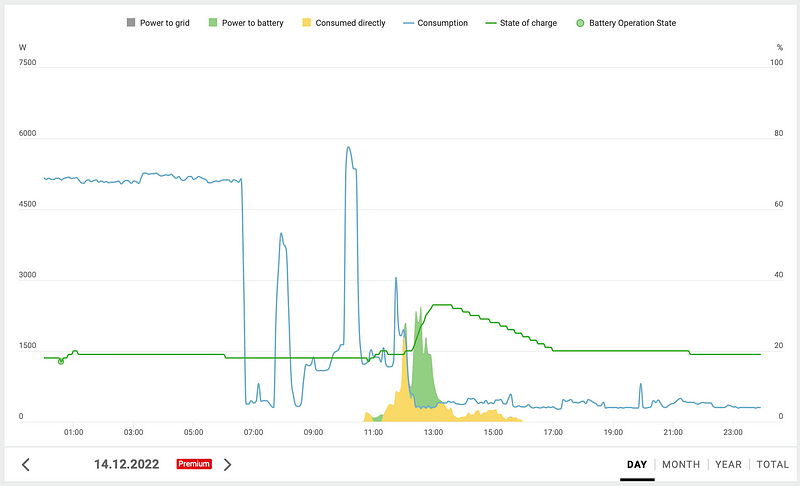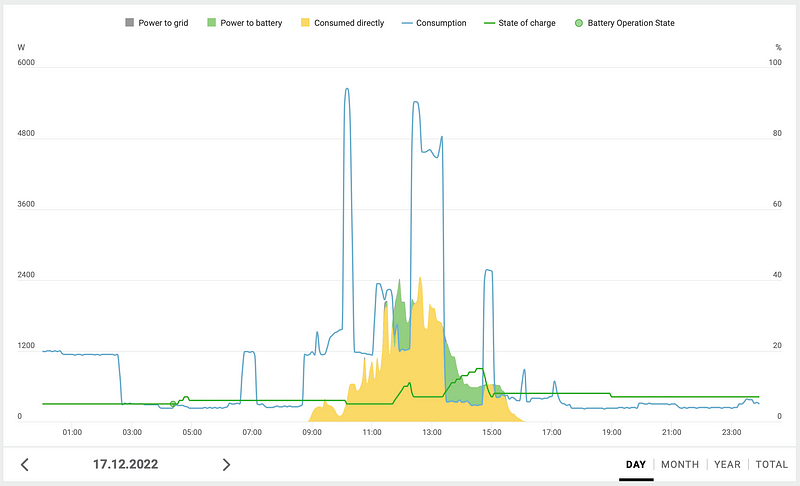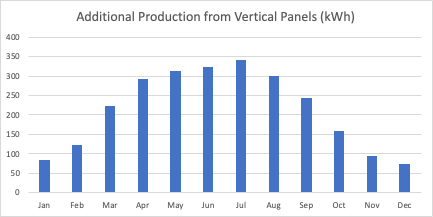# Enhancing Self-Sufficiency with Vertical Solar Panels in One Month
Written on
Chapter 1: Introduction to Vertical Solar Panels
Vertical solar panels are not exclusive to mountain cabins; they can be effectively utilized on residential properties as well. These panels can enhance solar energy self-sufficiency during winter months since they capture sunlight from the low winter sun more effectively than traditional roof-mounted panels. Moreover, they remain operational without the hindrance of snow accumulation.
As mentioned in a previous article, achieving solar self-sufficiency in modern single-family homes is attainable, even when factoring in electric vehicles in moderate climates such as Switzerland.
Chapter 2: Current Self-Sufficiency Status
My existing setup has achieved approximately 70% self-sufficiency annually, and the addition of vertical solar panels is expected to boost this figure to 80%. After a month of operation, it's time to evaluate our progress.
Section 2.1: Our Energy-Efficient Home Setup
We constructed our home in 2012 with a strong focus on energy efficiency and solar self-reliance. The house is equipped with a Drexel+Weiss Aerosmart X2 heating and ventilation system paired with a ground-source heat pump, which has kept our heating energy consumption remarkably low—around 1.2 kW on the coldest days.
Over the years, we have gradually added the following systems:
- 8 kWp east-west solar panels on the carport
- 14 kWp east-west solar panels on the house
- 4.8 kWp east-west solar panels on the house facade
- 12 kWh Fronius Solar Battery
- Two Tesla Model 3 vehicles, each with a 75 kWh battery
We manage our energy consumption through a Loxone building control system that optimizes power usage based on solar availability, battery levels, and seasonal variations.
Section 2.2: Energy Production Insights
From November 15 to December 15, 2022, our vertical solar panels generated the following energy:
- Eastern facade: 19.68 kWh
- Western facade: 17.71 kWh
From December 16, 2022, to January 15, 2023, the energy production was as follows:
(Eastern facade: data pending, Western facade: data pending.)
Although a total production of 37.39 kWh during this time might seem low, it’s important to note that this period coincides with the darkest days of winter. Additionally, the roof panels were covered in snow during the second week of December, rendering them ineffective. In contrast, the vertical panels still managed to produce energy:

On December 14, 2022, the vertical panels generated approximately 3 kWh, while the roof panels produced no energy. After clearing the snow from the carport panels a few days later, production increased to 7 kWh:

Section 2.3: Evaluating the Effectiveness of Vertical Panels
You might argue that vertical solar panels offer minimal assistance in addressing winter energy challenges, and you would be correct. However, in energy engineering, there are rarely simple solutions. Utilizing the Photovoltaic Geographical Information System, it’s predicted that my vertical panels will yield additional energy, as illustrated in the following chart:

These vertical panels are expected to increase overall self-sufficiency by 10 percentage points annually. Additionally, we can anticipate achieving 100% self-sufficiency for two extra months each year (March and October).

Achieving full self-sufficiency in October and March is particularly advantageous. It mitigates the risk of power shortages as winter progresses, ensuring we remain self-sufficient well into the spring. This aspect not only enhances energy stability but also potentially reduces costs as energy prices are likely to become more seasonal in the future.
In conclusion, I firmly believe that incorporating vertical solar panels and optimizing for self-sufficiency is a beneficial strategy for residential buildings. Stay tuned for a more comprehensive report in April on the first winter season with these panels.
Chapter 3: Videos for Further Insight
DIY Off Grid (Whole House) Solar System - Victron, Fimer, Pylontech
This video provides a detailed guide on setting up a complete off-grid solar system, showcasing various components and their integration for optimal efficiency.
Have we been doing Solar wrong all along?
This discussion explores common misconceptions about solar energy and highlights innovative approaches to maximize solar efficiency.
By implementing these strategies and continuously optimizing our solar energy systems, we can look forward to a sustainable and self-sufficient future.